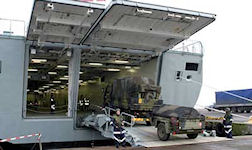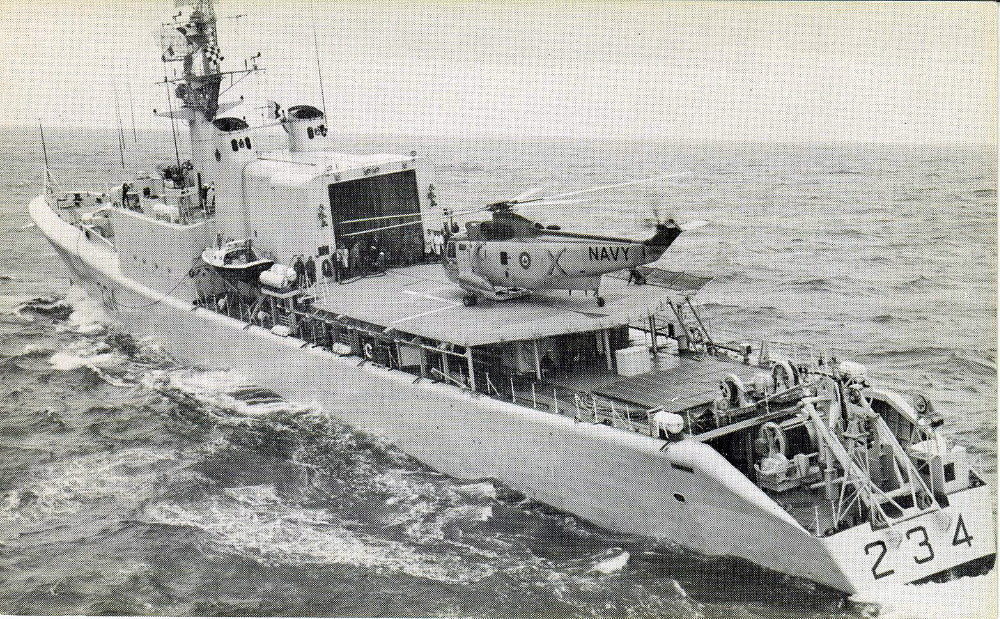- Reaction score
- 0
- Points
- 60
First of...thank you for a well thought out and reasonable response to my posts, the wording of which was needlessly hostile and confrontational....it was uncalled for and for that i apologize.
Good point and i broadly agree.....however it must be said that modifying an existing design is usually cheaper and faster than developing a new vessel from scratch. A case in point :
What eventually became the Iver Huitfeldt class frigates actually started out as a smaller ship , then known under the euphemism "Patrol Ship". The initial design plans showed a vessel of about 4500-5000 tonnes FL and with a much more limited sensor and weapons fitout. By that time ca 2003, the design of the command and support ships (Absalon class) was almost completed and several scale models were undergoing trials in test facilities in both the Netherlands (MARIN) and in DK (Force Technology) .
The Maersk designed hull turned out to be very efficient and showed exceptional seakeeping qualities , and it was therefore decided to base the patrol ships/frigates on the same hull.
Thus we saved a significant amount of time and money on the design process by not having to start from scratch.
But even though the IH design used the Absalon as a starting point, the demand for greater speed, survivability and signature reduction meant several notable changes had to be made and so the two vessels differ not only internally but also externally and below the waterline : Twice the power per shaft affects the flow around the hull and also the noise created....so to optimize IH for greater speeds as well as ASW quietening , the under water hull shape had to be redesigned , particularly the rear part.
What they do have in common is Standard Flex....which is not just the modules, but the underlying design philosophy that every piece of equipment aboard should be easy and as cheap as possible to maintain, upgrade or replace (accessibility).And of course they have a great degree of commonality in equipment, components and weapons.
As to the relation between steel grade and ship speed ....IDK .....operating environment , type and size of vessel , cost, and projected lifespan are all factors that affect which grade of steel you choose....so while speed might play a role i think its a minor one in this context....in civilian vessels, like say container ships, the hull plating is so thick it doesn't really matter much which grade they use(within reason )....in my experience the same type is used whether its a 15kt or 25kt ship. Though to be fair i am pretty new to this business so i'm not exactly the ultimate authority on the subject.
Here is a preliminary draft of the Absalon ....its not completely accurate but it gives an idea of the general layout :
http://www.navalhistory.dk/Danish/SoevaernsNyt/2003/_FlexStoetteskibePopUp.htm
I see no reason why the such a traversing system couldn't quite easily be fitted to any design you may choose, including IH/Absalon.....AFAIK none of the other designs in the running is fitted with either bear trap or a RAST system, and i know all UK ships uses TRIGON as well.
https://www.youtube.com/watch?v=bC2XIGMI2kM
As for TRIGON, well it is officially certified for use in sea state 6 and we have used it in way worse conditions than that..and on a ship smaller than the Halifax and Iroquois classes. It works just fine.
Oldgateboatdriver said:In other words, and I think you make that point too, even though they are of similar look and hull form, they are two different class of ships. And my point was that if you take parts of one and parts of the other, you end up with a third design different again from the other two, and thus not an "off-the-shelf" design.
Good point and i broadly agree.....however it must be said that modifying an existing design is usually cheaper and faster than developing a new vessel from scratch. A case in point :
What eventually became the Iver Huitfeldt class frigates actually started out as a smaller ship , then known under the euphemism "Patrol Ship". The initial design plans showed a vessel of about 4500-5000 tonnes FL and with a much more limited sensor and weapons fitout. By that time ca 2003, the design of the command and support ships (Absalon class) was almost completed and several scale models were undergoing trials in test facilities in both the Netherlands (MARIN) and in DK (Force Technology) .
The Maersk designed hull turned out to be very efficient and showed exceptional seakeeping qualities , and it was therefore decided to base the patrol ships/frigates on the same hull.
Thus we saved a significant amount of time and money on the design process by not having to start from scratch.
But even though the IH design used the Absalon as a starting point, the demand for greater speed, survivability and signature reduction meant several notable changes had to be made and so the two vessels differ not only internally but also externally and below the waterline : Twice the power per shaft affects the flow around the hull and also the noise created....so to optimize IH for greater speeds as well as ASW quietening , the under water hull shape had to be redesigned , particularly the rear part.
What they do have in common is Standard Flex....which is not just the modules, but the underlying design philosophy that every piece of equipment aboard should be easy and as cheap as possible to maintain, upgrade or replace (accessibility).And of course they have a great degree of commonality in equipment, components and weapons.
Which is pretty much the entire superstructure above the waterline ;-) ...but lets not quibbleOther than the protected spaces,
Money being the key word here....TBH i dont think speed had anything to do with the decision....the RDN wanted to use high strength steel but the tight budget meant they had to settle for a lesser grade. As the Command-Support ship designation af Absalon suggests they were not meant to be first line surface combatants and so it was deemed an acceptable compromise.Nothing wrong with that as it saves money, and I am sure your naval architect friends will confirm to you that the grade of steel used is related to the expected speed of a given ship design. The faster the expected speed, the higher the grade of steel.
As to the relation between steel grade and ship speed ....IDK .....operating environment , type and size of vessel , cost, and projected lifespan are all factors that affect which grade of steel you choose....so while speed might play a role i think its a minor one in this context....in civilian vessels, like say container ships, the hull plating is so thick it doesn't really matter much which grade they use(within reason )....in my experience the same type is used whether its a 15kt or 25kt ship. Though to be fair i am pretty new to this business so i'm not exactly the ultimate authority on the subject.
In short, no.....its difficult to explain,...but here goes :the Absalon has 4 decks beneath her helo deck , whereas IH only has 3 . The flex deck on Abs is 2 decks high..Would I be correct in understanding that in the Absalon, that "extra" deck is only from the Engine rooms and forward, but that I was correct that the flex deck area is no more decks, in number, but much higher, than in the Iver?
Here is a preliminary draft of the Absalon ....its not completely accurate but it gives an idea of the general layout :
http://www.navalhistory.dk/Danish/SoevaernsNyt/2003/_FlexStoetteskibePopUp.htm
Unfortunately no, as neither of them have any accommodation aft of the engine rooms , only workshops, stores/cargo rooms, the crew gym and the ships hospital.would it be correct to say that, in the Absalon, there are no living quarters aft of the engine rooms, but in the Iver, there are such quarters?
We do not consider the TRIGON handling system to be a "traversing" system in Canada. The one system that is acceptable for us is an equivalent to our 'bear trap" and undermount system of rails below deck
I see no reason why the such a traversing system couldn't quite easily be fitted to any design you may choose, including IH/Absalon.....AFAIK none of the other designs in the running is fitted with either bear trap or a RAST system, and i know all UK ships uses TRIGON as well.
;D.....you know what i call that ?.....another day at the office ;-).....which in my case is bobbing around on the brine around Greenland ( and occasionally the Faroe Islands) Since a part of my job also involves being on the helo damage control/rescue team i am intimately familiar with helo shipboard operations in rough weather. we often practice in the kind of seas you post above.That is because we tend to use our helicopter in weather like this, unlike every body else: https://www.youtube.com/watch?v=5p1xx0ysfeM
https://www.youtube.com/watch?v=bC2XIGMI2kM
As for TRIGON, well it is officially certified for use in sea state 6 and we have used it in way worse conditions than that..and on a ship smaller than the Halifax and Iroquois classes. It works just fine.










